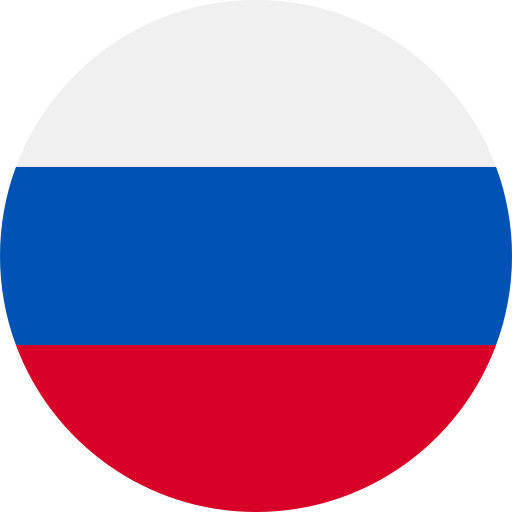Key Takeaways
- Distinct Accents: Moscow and Ukrainian accents in Russian voiceovers offer unique characteristics that influence audience perception and character portrayal.
- Moscow Accent Features: Known for its neutral, polished sound, the Moscow accent conveys authority and sophistication, making it ideal for formal projects like documentaries.
- Ukrainian Accent Appeal: The Ukrainian accent adds warmth and emotional resonance, suitable for storytelling in animation or commercials where connection with the audience is crucial.
- Pronunciation Differences: Moscow accents feature clear enunciation of consonants and distinct vowel sounds, while Ukrainian accents exhibit softer consonant sounds and elongated vowels for a more melodic delivery.
- Intonation Patterns: Intonation in the Moscow accent is steadier, conveying professionalism; in contrast, the varied intonation patterns of the Ukrainian accent enhance expressiveness in performances.
- Market Demand Insights: Understanding these accents helps align voice talent selection with project goals to effectively engage targeted audiences.
Ever wondered how the nuances of a Russian voiceover can change your perception of a character? The accents from Moscow and Ukraine offer distinct flavors that can make or break your project. Whether you’re diving into animation, film, or commercial work, understanding these differences is crucial.
Overview of Russian Voiceover Accents
Russian voiceover accents play a crucial role in how audiences perceive characters and narratives. Moscow and Ukrainian accents differ significantly, each bringing unique nuances to voiceovers.
Moscow accents often sound more neutral and polished, with a distinct clarity that many find appealing in professional contexts. This accent is frequently favored for formal projects, such as documentaries or corporate videos. It conveys authority and sophistication, making it a popular choice among clients seeking high-quality voice talent.
Ukrainian accents, on the other hand, introduce warmth and character into voiceovers. They possess a melodic quality that can enhance storytelling in animation or commercials. Clients looking for engaging and relatable performances might prefer this accent to connect better with their audience.
Understanding these differences allows you to choose the right voice artist for your project. Whether you aim for the refined touch of a Moscow accent or the inviting tone of a Ukrainian one, recognizing these subtleties enhances the impact of your message.
Both accents offer valuable attributes for various applications in media production. By carefully considering which accent aligns with your project’s goals, you ensure an effective connection between your content and its audience.
Characteristics of Moscow Accent
The Moscow accent stands out with its neutral and polished sound, making it highly sought after for various voiceover projects. This accent often conveys authority and sophistication, which can significantly enhance the perception of a character in animations, films, or commercials.
Phonetic Features
Moscow accents feature specific phonetic characteristics that set them apart. You’ll notice clear enunciation of consonants, especially at the beginning of words. Vowels tend to be pronounced more distinctly compared to other regional accents. For instance, the ‘o’ in „mo” sounds rounder and fuller. Stress patterns also play a crucial role; they’re typically placed on the syllable preceding a vowel for better clarity. These features contribute to an overall crisp delivery that voice artists can leverage for effective storytelling.
Cultural Influences
Cultural influences shape the Moscow accent deeply. The historical significance of Moscow as Russia’s capital lends prestige to its accent. Many voice actors adopt this accent due to its association with professionalism and refinement in media production. Additionally, exposure to diverse dialects within Moscow itself creates a melting pot effect; you may hear variations influenced by different ethnic communities residing there. This rich cultural backdrop allows voiceover talent from Moscow to resonate well with varied audiences while maintaining a familiar yet sophisticated tone ideal for compelling narratives.
Understanding these characteristics enhances your ability to select the right voice actor for your project—one who embodies both professionalism and clarity that the Moscow accent delivers so effectively.
Characteristics of Ukrainian Accent
The Ukrainian accent in Russian exhibits distinct characteristics that set it apart from its Moscow counterpart. This uniqueness can significantly influence voiceovers and how audiences connect with the content.
Phonetic Features
Ukrainian accents often display softer consonant sounds and a more melodic intonation. You’ll notice a tendency to elongate vowels, which adds warmth and expressiveness to speech. For instance, the pronunciation of „и” (i) may sound more like „ee,” creating a smooth delivery that captivates listeners. Additionally, speakers frequently emphasize certain syllables differently than Moscow accents, resulting in a rhythmic quality that enhances storytelling in voiceovers. These phonetic traits make Ukrainian voice artists particularly suited for engaging roles where emotional resonance is essential.
Cultural Influences
Cultural influences play a significant role in shaping the Ukrainian accent. The rich history of Ukraine brings forth elements from various languages and dialects, reflecting its diverse heritage. This blend fosters an accessible yet unique sound that resonates well with audiences across different projects—be it animation or commercial work. Moreover, this cultural backdrop imbues voice actors with an authentic connection to their characters, allowing them to convey genuine emotion effectively through their performances. Understanding these influences ensures you select the right voice talent for your project, enhancing audience engagement through relatable storytelling.
By appreciating these nuances within the Ukrainian accent, you can better identify suitable voiceover talent who can bring your vision to life with authenticity and charm.
Key Differences Between the Accents
Recognizing the key differences between Moscow and Ukrainian accents enhances your understanding of voiceover options. Each accent brings unique qualities that can significantly impact character portrayal and audience connection.
Pronunciation Variations
Pronunciation plays a crucial role in distinguishing these two accents. The Moscow accent features clear enunciation, particularly with consonants. This clarity lends itself well to formal projects, where precision matters most. You’ll notice distinct vowel sounds, contributing to a crisp delivery that resonates authority.
On the other hand, the Ukrainian accent showcases softer consonant sounds and elongated vowels. These pronunciation traits create a warmer tone, perfect for storytelling in animation or commercials. If you aim for emotional engagement, opting for voice artists with a Ukrainian background may offer that melodic quality you’re seeking.
Intonation Patterns
Intonation patterns further differentiate these accents. In the Moscow accent, you often hear a more even pitch throughout sentences, which conveys professionalism and sophistication. This steadiness makes it ideal for serious narratives requiring credibility.
Conversely, the Ukrainian accent incorporates varied intonation patterns that add rhythm to speech. This dynamic quality enhances expressiveness in performance—particularly effective in roles demanding emotional depth. Using voice talent skilled in this accent can elevate your project by making it relatable and engaging.
Understanding these differences helps you select the right voice artist or over actor for your specific needs, ensuring your message is delivered effectively while resonating with listeners.
The Impact on Voiceover Industry
Understanding the differences in Russian accents from Moscow and Ukraine significantly impacts the voiceover industry. These variations influence how audiences perceive characters and narratives, ultimately affecting project outcomes.
Audience Perception
Your audience’s perception hinges on the nuances of voiceover delivery. A Moscow accent conveys authority and professionalism, making it perfect for formal settings like corporate videos or documentaries. On the other hand, a Ukrainian accent brings warmth and emotional depth, ideal for animation or commercials where connection matters most. When you choose voice talent with these specific accents, you’re not just picking a sound; you’re selecting an emotional tone that resonates with your target demographic.
Market Demand
Market demand varies based on project type and desired impact. Productions requiring polished delivery often lean toward Moscow voice actors due to their crisp enunciation and refined sound. In contrast, projects aimed at evoking emotion frequently seek out Ukrainian voice artists for their melodic qualities. By understanding these trends, you can align your projects with the right voice over talent to enhance audience engagement effectively.
Voiceovers are more than mere words; they’re about creating connections through sound. Recognizing these accent differences can guide your decisions in selecting suitable voice artists who bring authenticity to your projects while appealing directly to your intended audience.
Conclusion
Recognizing the differences between Moscow and Ukrainian accents can significantly enhance your voiceover projects. Each accent brings unique qualities that influence character portrayal and audience engagement. Whether you aim for polished authority or emotional warmth, understanding these nuances will help you select the right voice talent for your needs.
By choosing wisely, you can create a more authentic connection with your audience, ensuring your message resonates effectively. Embrace these distinctions to elevate your storytelling and achieve greater impact in your work.
Frequently Asked Questions
What is the main focus of the article?
The article explores how Russian voiceover nuances, specifically the Moscow and Ukrainian accents, affect character perception in various media projects. It highlights their unique phonetic features and cultural influences that shape their suitability for different types of storytelling.
How does the Moscow accent differ from the Ukrainian accent?
The Moscow accent is characterized by clear enunciation and polished delivery, which conveys authority, making it suitable for formal projects. In contrast, the Ukrainian accent features softer consonants and elongated vowels that add warmth and emotional resonance, ideal for engaging storytelling in animation and commercials.
Why are accents important in voiceover work?
Accents significantly influence audience perception and character portrayal. Choosing the right accent can enhance message delivery, create authentic connections with audiences, and ensure that a project resonates emotionally or maintains professionalism depending on its goals.
What type of projects benefit from a Moscow accent?
Projects requiring authority and sophistication benefit from a Moscow accent. This includes corporate videos, documentaries, or any formal content where clarity and professionalism are essential for effective communication.
When should I consider using a Ukrainian accent?
A Ukrainian accent is ideal for projects aiming to evoke emotion or tell engaging stories. It works particularly well in animation and commercials where warmth and relatability are crucial to capturing audience interest.
How do these accents impact audience engagement?
Different accents create varied emotional responses. The crispness of a Moscow accent instills trustworthiness while a warm Ukrainian accent fosters connection. Understanding these nuances helps producers select appropriate voice talent to enhance viewer engagement effectively.
Are there specific phonetic features of each accent mentioned in the article?
Yes! The Moscow accent showcases clear consonant enunciation with distinct vowel pronunciation contributing to its crisp sound. The Ukrainian accent has softer consonants with elongated vowels that offer a rhythmic quality enhancing emotional storytelling.
How can recognizing these differences guide talent selection?
By understanding how each accent affects character portrayal, producers can choose voice artists who best fit their project’s tone—Moscow voices for authority-driven narratives versus Ukrainian voices for emotionally charged content—improving overall impact.







